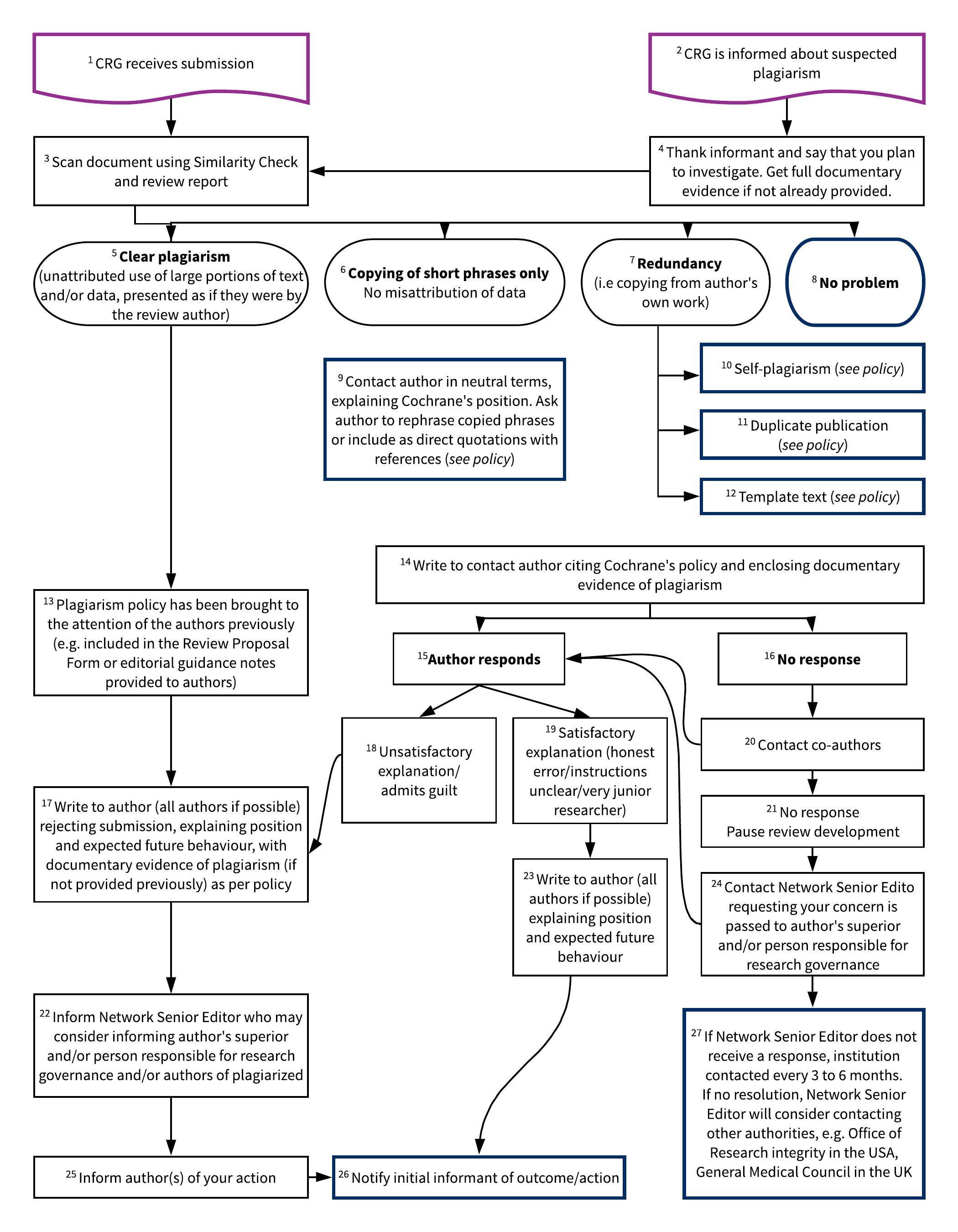...
The Committee on Publication Ethics (COPE) has published guidance, in the form of a flowchart, on how to deal with suspected plagiarism. This flowchart has been adapted, with permission, to Cochrane's editorial process. Editorial teams with a case of suspected plagiarism should follow the process outlined in the flowchart in the Figure Flowchart. As shown in the flowchart, there is no arbitrary threshold that should be used to signify plagiarism, rather the nature of the duplicated material is as important as the incidence.
...
It is good practice to ensure that the Co-ordinating Editor and Contact Editor (if used) for a review are informed in cases of overlapping text and correspondence with authors. When authors make changes in response to an Editor’s feedback, a member of the editorial team should check the revised manuscript when resubmitted to confirm the revisions are sufficient.
...
Flowchart.
...
What to do if plagiarism is suspected
Adapted with permission from COPE from the flowchart (2013): “What to do if you suspect plagiarism: Suspected plagiarism in a submitted manuscript”. |
Substantial and/or repeat instances of plagiarism
Cochrane Review Groups should follow certain steps if they identify one of the following: (1) high levels of clear plagiarism within one review that the Co-ordinating Editor would like to draw to the attention of the Network Senior Editor and Editor in Chief; (2) repeated instances of plagiarism at different stages of a review; or (3) from the same author(s) in different reviews.
As noted in the flowchart (see Figure) Flowchart, it may be appropriate to report author(s) to academic institutions. This action, and any other very serious consequences must be discussed and undertaken in consultation with the Network Senior Editor who will inform the Editor in Chief of such cases. The Network Senior Editor and Editor in Chief will, however, consider situations on a case-by-case basis and decide on an appropriate course of action.
Recording information about cases of suspected plagiarism in Archie
Storing Similarity Check reports: Editorial teams can record similarity scores with notes of what was checked in the History section of the review workflow. If relevant, copies of similarity reports may be saved in the workflow files.
...
Instances of serious plagiarism: These will be escalated to the Network Senior Editor and Editor in Chief (see 'Substantial and/or repeat instances of plagiarism'). The Network Senior Editor and Editor in Chief will monitor whether cases occur with the same authors or groups of authors, and will take appropriate action.

